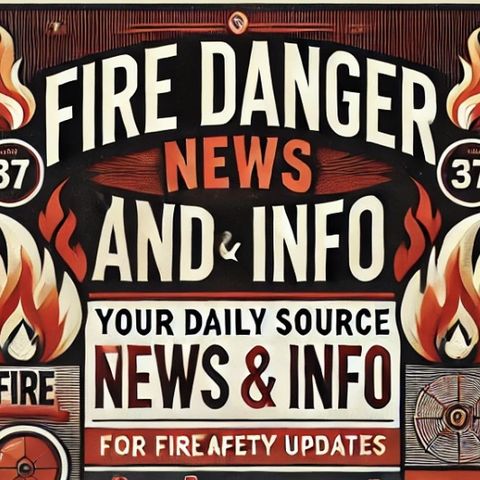Combating Wildfires: How USGS Wildland Fire Science Leads the Charge

Descarga y escucha en cualquier lugar
Descarga tus episodios favoritos y disfrútalos, ¡dondequiera que estés! Regístrate o inicia sesión ahora para acceder a la escucha sin conexión.
Combating Wildfires: How USGS Wildland Fire Science Leads the Charge
Esta transcripción es generada automáticamente. Ten en cuenta que no se garantiza una precisión absoluta.
Descripción
Wildfires are a growing concern in the western United States, with impacts stretching from environmental damage to economic and health consequences. The intensification and frequency of these fires demand a...
mostra másThe USGS Wildland Fire Science provides critical insights into how wildfires start, spread, and can be controlled. This knowledge is crucial for emergency services, land managers, and policymakers working to mitigate the destructive effects of wildfires. By leveraging cutting-edge research and technology, USGS scientists contribute to a clearer understanding of fire behavior and its interactions with various landscapes.
A key area of USGS research focuses on the environmental predictors of wildfire risks. By studying weather patterns, vegetation types, and landscape topographies, scientists can identify regions that are particularly vulnerable to ignitions. This research helps in developing predictive models that inform proactive fire management strategies, such as creating firebreaks or implementing controlled burns to manage fuel loads.
In addition, the USGS explores the ecological impacts of wildfires. Understanding how fire affects soil quality, water systems, and plant communities is essential for developing rehabilitation and restoration efforts post-fire. This includes studying the resilience of different ecosystems to recover from fire damage, which can help in planning future conservation and land-use strategies.
The integration of technological advancements, such as remote sensing and geographic information systems (GIS), assists the USGS in monitoring and analyzing wildfires in real-time. These tools enable scientists to map fire extents, assess damages, and make predictions about future fire behavior under various climate scenarios. With the increasing availability of satellite data, researchers can closely monitor fire-prone areas, providing timely information to decision-makers for more effective responses.
Furthermore, USGS fire science contributes to public health and safety by examining the air quality and health impacts of wildfire smoke. Understanding the composition of smoke and its dispersion helps in issuing health advisories and creating better public health infrastructure to protect vulnerable populations during wildfire events.
Engagement and education are also critical components of the USGS mission. By partnering with local communities, government agencies, and non-profit organizations, USGS promotes knowledge sharing and increased awareness about the causes and consequences of wildfires. This collaborative approach fosters a culture of preparedness and resilience among communities at risk.
To discover more about how USGS science is making a difference in the field of wildland fire research, consider visiting the USGS Wildland Fire Science webpage. Here, you can find detailed resources and updates on the ways science is contributing to developing more effective strategies for combating and understanding wildfires.
As wildfires continue to pose significant threats across the western United States, the role of fire science becomes ever more critical. By expanding our scientific understanding of wildfires through research, innovation, and collaboration, USGS Wildland Fire Science is at the forefront of efforts to protect both the natural world and human communities from the devastating impacts of these blazes.
Información
| Autor | QP-4 |
| Organización | William Corbin |
| Página web | - |
| Etiquetas |
Copyright 2024 - Spreaker Inc. an iHeartMedia Company
